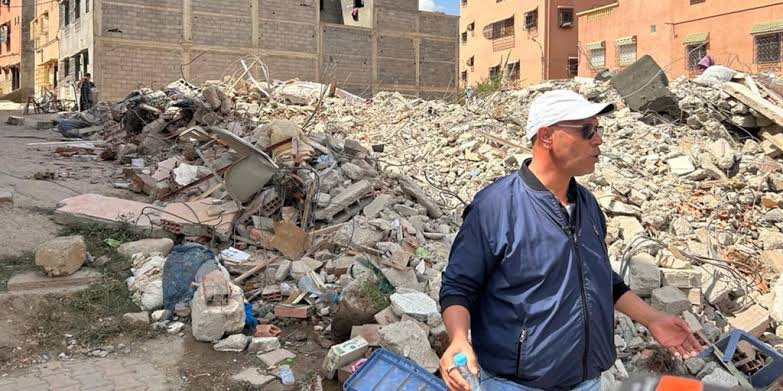Long winter plagues Morocco quake survivors

Months have passed since an earthquake ravaged Abdallah Oubelaid’s destitute village nestled in Morocco’s High Atlas mountains. Each day, Oubelaid and fellow villagers sift through the debris, seeking scraps of wood for warmth and sustenance, and clinging to hope of recovering valuable possessions. Amidst this desolation, Oubelaid, 35, laments the delay in government aid upon which his family’s survival hinges.
Official figures indicate approximately 3,000 casualties in the wake of the 6.8 magnitude earthquake that struck on September 8, leaving over 60,000 homes in ruins. In Douzrou, Oubelaid’s village, situated some 80 kilometers from Marrakesh, locals estimate a death toll of around 80. Amidst the rubble, the striking pink and white minaret of a mosque stands as a poignant reminder of the community’s devastation.
Approximately 150 families, including survivors of Douzrou, have sought refuge a few kilometers away, braving harsh conditions beside a roadside with a backdrop of snow-capped peaks. While some have received governmental aid – either a monthly stipend of 2,500 dirhams ($249) or 20,000 dirhams for reconstruction – many, like Oubelaid, remain in limbo, uncertain of their fate.
Despite government assurances of prompt and efficient aid distribution, discontent simmers among affected communities. Reports of protests in regions such as Taroudant province and Talat Nyacoub underscore the frustrations of those grappling with delayed assistance amidst unforgiving winter conditions. Opposition figures have raised concerns over the opaque and improvised nature of reconstruction efforts.
The government has cited various reasons for rejecting aid applications, including residency status at the time of the earthquake and inhabitable dwelling conditions. Meanwhile, in urban centers like Amizmiz, signs of recovery abound, albeit amidst reminders of the tragedy, with families still residing in temporary shelters provided by authorities.
For survivors like Hamed Oumhend, the construction of barracks by Moroccan and Dutch NGOs has been a lifeline, shielding them from the elements and providing essential warmth. However, concerns persist over the long-term safety and viability of resettling in Douzrou, a village with a name that ominously translates to “under the rock” in the local Berber tongue.
Despite their resilience, the scars of the disaster run deep among Douzrou’s inhabitants, many of whom continue to grapple with trauma and loss. As they navigate the arduous journey towards recovery, the specter of another calamity looms large, casting a shadow over their hopes for a brighter future amidst the bleakness of winter’s grip.
